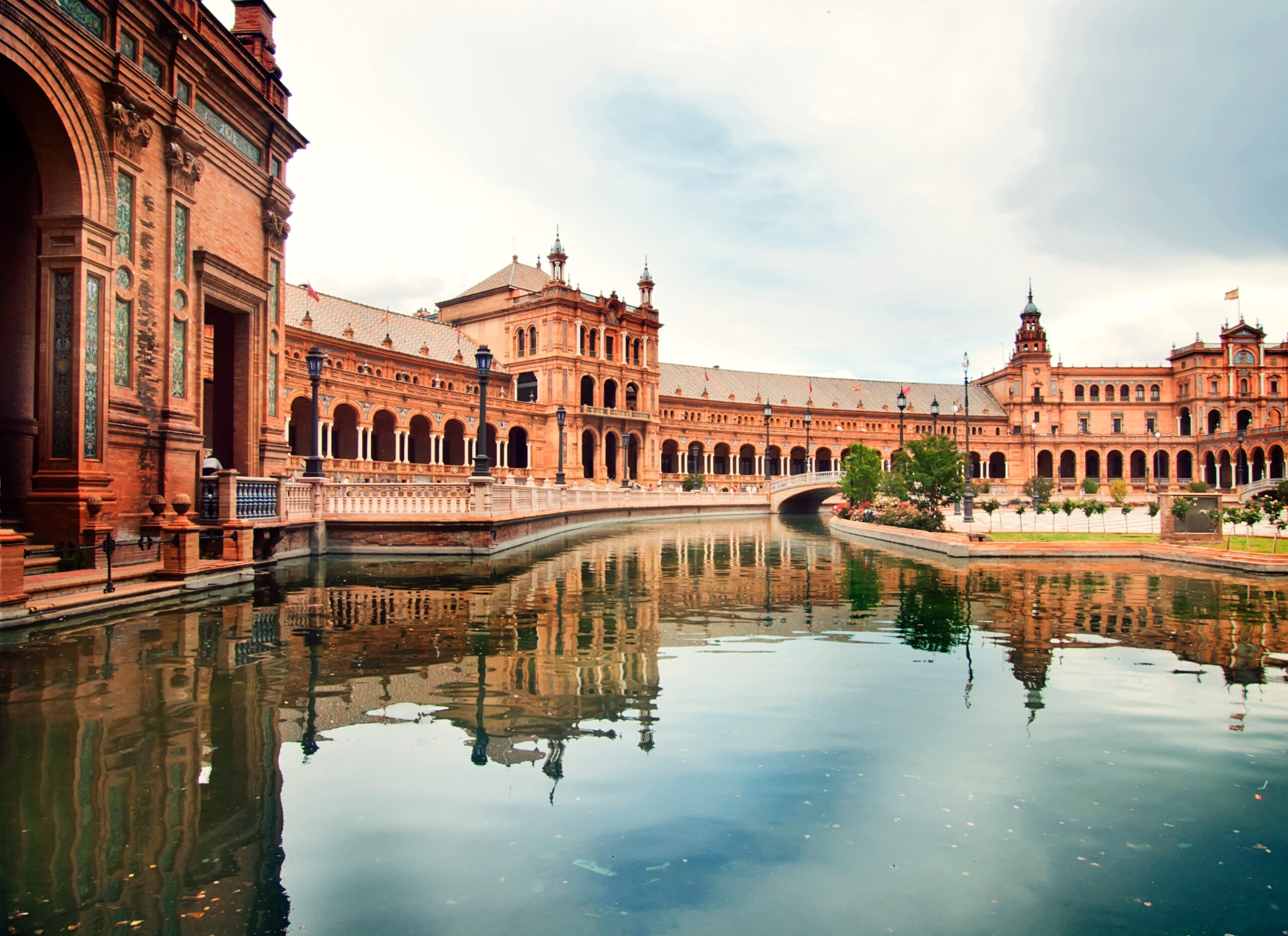The Essence of Andalusia: An Overview of the Charming City of Seville, Spain.
Step into the heart of Andalusia, Seville! Set along the Guadalquivir River, this sun-soaked city features a warm and welcoming atmosphere, where ancient architecture, fragrant orange trees, and plazas intertwine seamlessly.
Seville stands as a living tapestry of Moorish, Roman, and Renaissance influences, each layer contributing to its distinct character. Its history dates back over 2,000 years, with traces of its past evident in its iconic landmarks. Beyond its historical treasures, Seville celebrates life with exuberant festivals, flamenco dances, horse parades, and vibrant casitas that transform the city into a kaleidoscope of colors and rhythms.
From its storied past to its lively present, Seville invites travelers to revel in the essence of the Spanish soul. Whether you are coming for delicious culinary delights, beautiful landscapes, and winding streets or just to wander around and soak in the charm of southern Spain, Seville is sure to capture your heart, just like it has ours.
Discover the essence of Andalusia and explore the city’s breathtaking beauty with this beginner’s guide to discover Seville, Spain. Keep scrolling to find out more.
A Brief History of Seville
Steeped in history and spanning over two millennia, Seville, Spain, is a city of great significance and cultural fusion. Its story begins in ancient times when the Romans established the town of Hispalis, followed by the arrival of the Moors in the 8th century, where it blossomed into a center of Islamic culture.
The city’s golden era emerged during the 16th century when it became a gateway to the New World, serving as the port of embarkation for explorers like Christopher Columbus. Throughout its history, Seville endured periods of conquest and reconquest.
Today, Seville stands as a dynamic blend of past and present, where ancient landmarks and modern amenities coexist in harmony, inviting visitors to discover the story of this iconic Spanish city.
Best Time to Visit Seville
The best time to visit Seville, Spain, is during the shoulder seasons of spring and fall when the weather is mild and pleasant. From March to May and September to November, Seville offers lower crowds, beautiful sunsets, and comfortable temperatures, with blooming gardens and lively outdoor events. Whether you seek to embrace the festivals of spring or savor the cultural richness during the fall, these shoulder seasons provide the perfect window to experience the soul of Seville.
Flamenco Culture of Seville
The Flamenco culture of Seville, Spain, is a passionate and deeply-rooted art form that weaves the soul of Andalusia. Seville, Flamenco encompasses song, dance, and guitar playing, expressing a range of emotions from joy to sorrow. As the heartland of Flamenco, Seville embraces numerous tablaos and peñas, where local artists and renowned performers come together to share their artistic expression.
Destination Highlights
From the inspiring Seville Cathedral, the largest Gothic cathedral in the world, to the opulent Alcazar, the city’s historical landmarks are a testament to its heritage. Seville’s soulful rhythms and passionate performances enchant visitors, while its lively plazas, mouthwatering tapas, and festivals invite travelers to immerse in the highlights of Seville.
Alcázar of Seville: The Alcazar of Seville is a palace complex that is a testament to the city. Originally built as a fortress in the 10th century, the Alcazar is a UNESCO World Heritage site and one of Seville’s most iconic landmarks. You can explore its exquisite courtyards, lush gardens, and intricately adorned halls, immersing in the captivating beauty of the palace.
Triana Neighborhood: The Triana neighborhood of Seville is nestled along the western bank of the Guadalquivir River. Triana exudes a unique character, and this bohemian district is renowned for its flamenco heritage, where visitors can immerse themselves in authentic tablaos and passionate art forms.
Plaza de España: Piazza de Espana in an iconic square dating back to 1929. The square features a semi-circular building representing each Spanish province and is a popular hang-out spot for tourists and locals.
Flamenco Shows: With its deep-rooted connection to Andalusian culture, flamenco finds its heart in Seville. Whether in the intimate ambiance of a local peña or the grand stage of a tablao, experiencing a flamenco show in Seville is an unforgettable experience.
Seville Cathedral: The Seville Cathedral, also known as the Cathedral of Saint Mary of the See, is the largest Gothic cathedral in the world. You can marvel at its stunning altarpiece stained glass windows, and visit the tomb of Christopher Columbus.
Seville stands as a testament to the rich history and undeniable charm that Spain has to offer. This captivating city captures the essence of Andalusia, enchanting visitors with its awe-inspiring architecture and warm hospitality. We hope you have enjoyed this beginner’s guide to Seville, Spain, and that it inspired you to plan a trip for yourself.




Leave a Reply